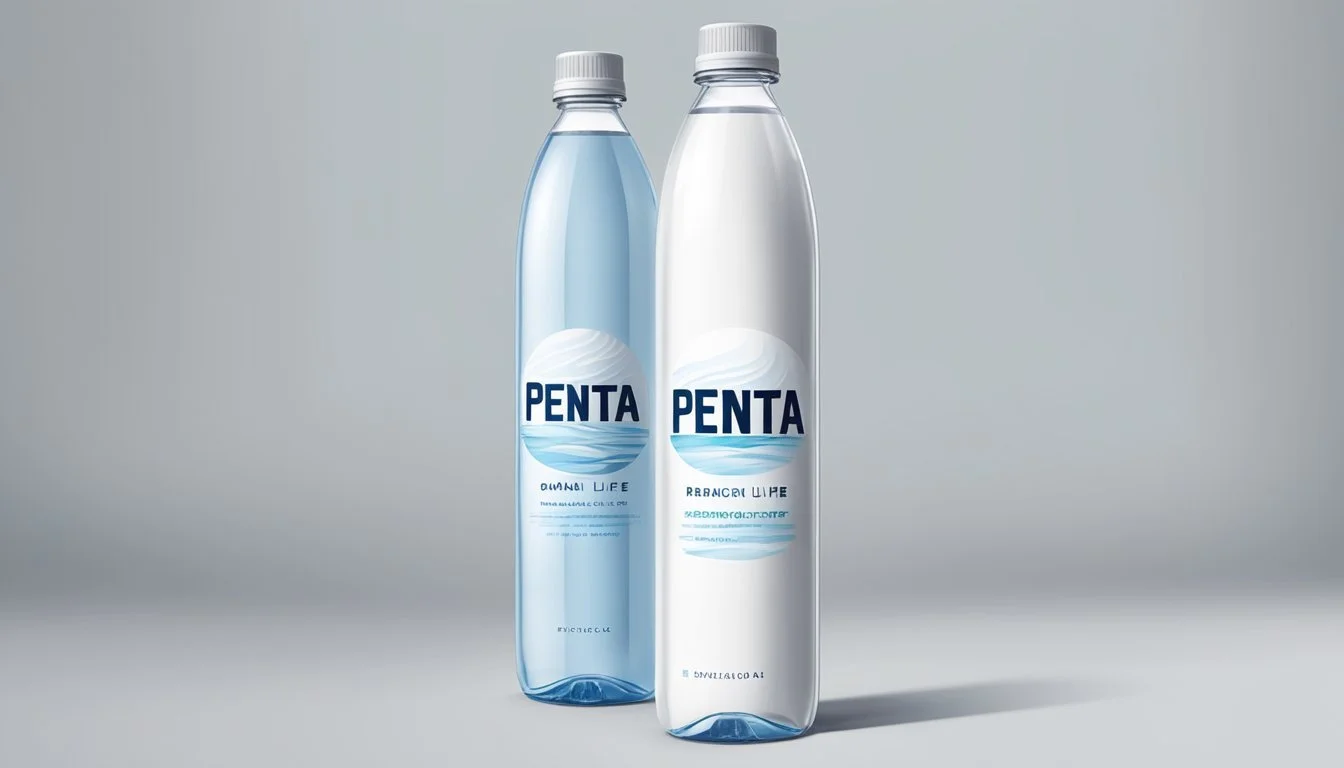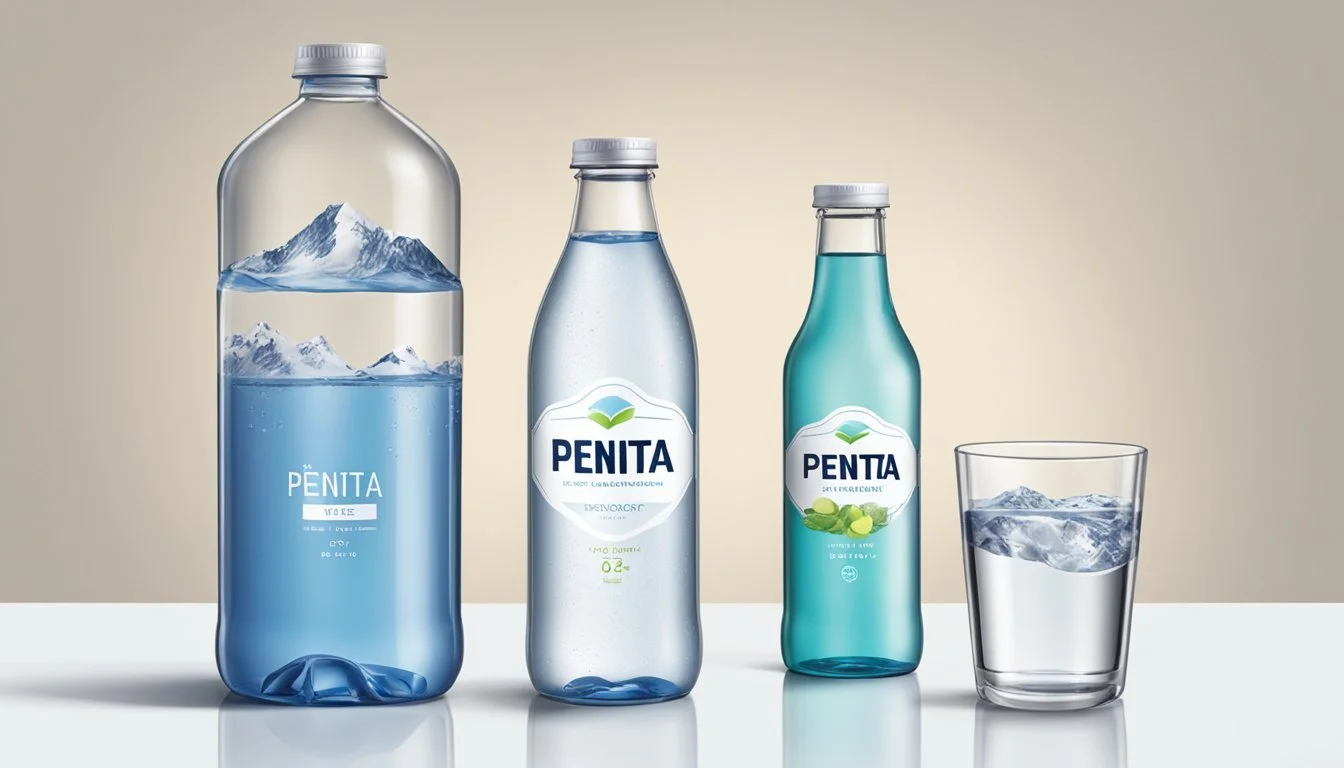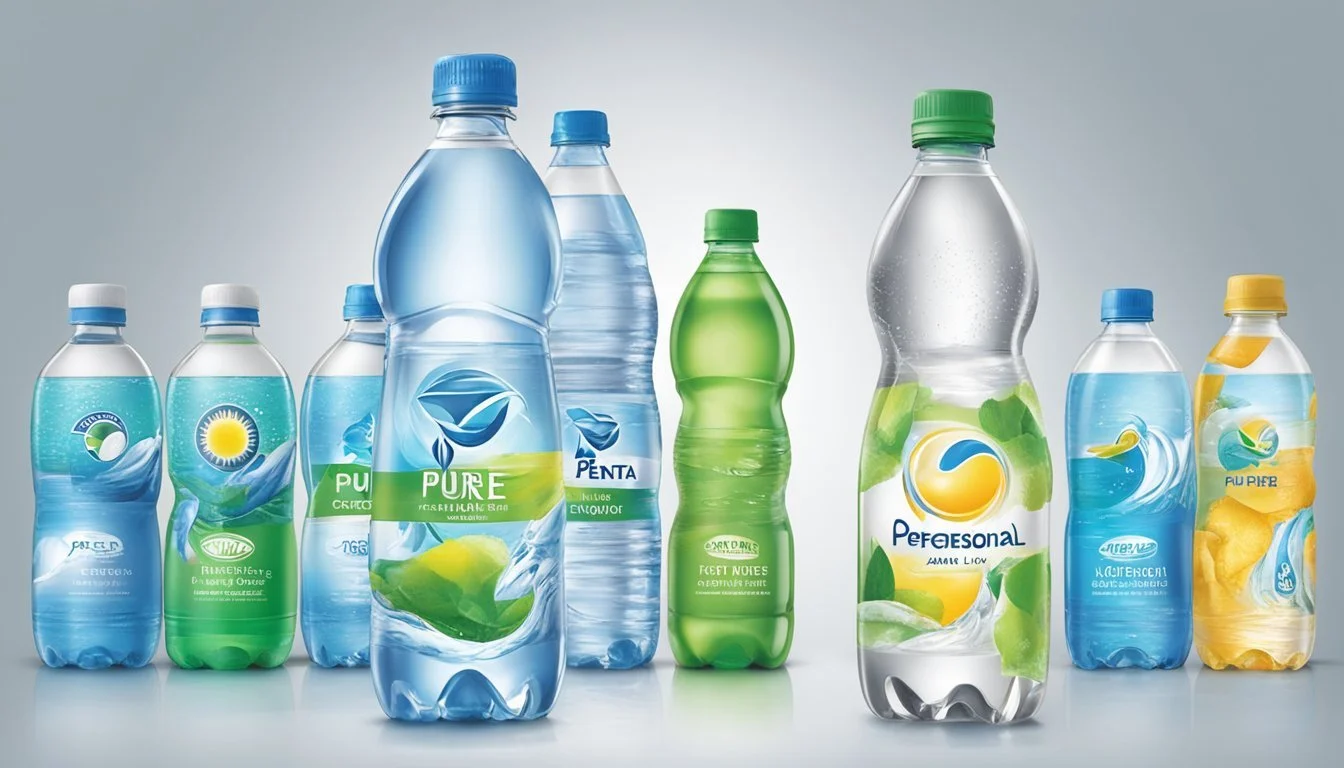Penta vs. Pure Life
Expert Analysis on Leading Bottled Water Brands
Choosing the right bottled water can be more complex than it first seems, especially when comparing brands like Penta and Nestlé Pure Life. Both brands market themselves as offering high-quality hydration, but the methods and final products differ in critical ways that consumers should be aware of.
Nestlé Pure Life undergoes a rigorous 12-step purification process involving reverse osmosis and activated carbon filters, making it a reliable source for clean water. In contrast, Penta boasts a unique 13-step purification method that includes patented technologies, claiming to offer a purer, more oxygen-rich water.
Ultimately, Penta's advanced purification techniques set it apart as the superior choice for those seeking the utmost in water purity. This article will provide an in-depth look at the specifics of each brand's offerings, enabling you to make an informed decision about which bottled water meets your needs.
Overview of Bottled Water Brands
The landscape of bottled water is shaped by a variety of brands, each offering unique qualities. Key players like Penta and Nestlé Pure Life stand out due to their specific purification processes and market strategies.
Historical Context of Bottled Water
The bottled water industry has evolved significantly over the years. Initially, bottled water was a luxury item in the 18th century, often sourced from mineral springs.
The industry saw rapid expansion in the 20th century with advancements in bottling technology and growing concerns over tap water quality. Brands like Nestlé entered the market, offering purified water at competitive prices, making bottled water widely accessible.
Understanding the Popularity of Penta and Nestlé Pure Life
Penta and Nestlé Pure Life have carved niches in the competitive bottled water market. Penta is renowned for its 13-step purification process, which includes reverse osmosis and patented ultraviolet light treatments. This ensures high purity and a clean taste.
Nestlé Pure Life, meanwhile, follows a rigorous 12-step purification process utilizing activated carbon filters and multiple filtration stages. The brand is also known for its affordability and widespread availability, often sold in bulk to reduce costs.
Both brands focus on delivering purified, safe drinking water but differ in their specific processes and market approaches.
Analyzing Water Quality and Sources
Both Penta and Nestlé Pure Life employ sophisticated purification processes and sources to maintain water quality. Their approaches vary, impacting taste and safety.
The Pursuit of Purity in Bottled Water
Penta uses a unique 13-step purification process. This includes advanced filtration techniques like reverse osmosis, ultraviolet light exposure, and ozonation. The aim is to remove impurities and contaminants, ensuring high purity.
Nestlé Pure Life utilizes a rigorous 12-step process. This includes reverse osmosis, multiple filtration stages, and activated carbon filters. Their procedures emphasize removing pollutants such as chlorine and other volatile organic compounds.
These meticulous processes ensure both brands provide water free from common contaminants.
Comparative Analysis of Water Sources
Penta sources its water from municipal sources, which is then heavily purified. This ensures consistency but lacks the appeal of natural origins.
Nestlé Pure Life also sources water from municipal supplies and natural springs. Their varied sources include wells and protected aquifers, ensuring a blend of natural and controlled environments.
Compared to brands like Evian and Fiji, both of which use naturally sourced spring water from protected environments, Penta and Pure Life's use of municipal sources is distinct. Evian sources from Cachat Spring in the French Alps; Fiji derives water from an aquifer in volcanic rock formations.
Choosing between Penta and Pure Life may come down to preferences between purification rigor and water source authenticity.
Health and Hydration Factors
Choosing between Penta and Pure Life bottled water involves understanding their health and hydration implications. Both brands follow rigorous purification methods, but the specifics of health benefits and potential contaminants play a crucial role in decision-making.
Health Benefits of Adequate Hydration
Proper hydration is essential for maintaining bodily functions and overall health. Drinking enough water helps regulate body temperature, transport nutrients, and remove waste.
Penta Water: Known for ultra-purification, it claims to enhance hydration by reducing water clusters, potentially allowing quicker absorption in the body.
Pure Life: With a 12-step purification process, it ensures clean and safe drinking water, contributing to daily hydration needs.
Highlight: Both options support adequate hydration, which is critical for kidney function, skin health, and cognitive performance.
Potential Contaminants and Their Health Impact
Contaminants in bottled water can pose health risks. It's crucial to evaluate the purification processes and the absence of harmful substances in both brands.
Lead and Arsenic: Both Penta and Pure Life undergo thorough filtration to remove heavy metals like lead and arsenic, which can cause severe health problems, including developmental issues and certain cancers.
Mercury: Similarly, the purification stages target mercury elimination, ensuring safety for consumption.
Microbial Contaminants: Advanced filtration in both brands ensures the removal of bacteria and viruses, minimizing the risk of waterborne diseases.
Conclusion: Evaluating both Penta and Pure Life, their sophisticated purification methods provide a high level of safety. The advanced techniques employed by each brand significantly reduce the presence of harmful contaminants, ensuring the health and well-being of consumers.
Water Treatment and Purity Standards
Pure Life and Penta Water employ advanced treatment methods to ensure the highest quality and purity. They adhere to stringent regulatory standards to provide safe, clean drinking water to consumers.
Reverse Osmosis and Filtration Processes
Pure Life utilizes a 12-step purification process that includes reverse osmosis and multiple filtration stages. These steps ensure the removal of impurities and contaminants. Activated carbon filters are employed to eliminate organic compounds, while microfiltration and ozonation are used to further purify the water.
Penta Water also applies a sophisticated multi-step approach. Its process includes ultraviolet light and ozone treatment to eradicate bacteria and viruses. The water is then run through reverse osmosis to filter out dissolved solids and other impurities. Minerals are added back for flavor and health benefits.
FDA Regulations and Safety Protocols
Both Pure Life and Penta adhere to FDA regulations and safety protocols. The FDA sets standards for bottled water, requiring rigorous testing to ensure it meets safety criteria. Regular testing for contaminants like microplastics and chemical residues is mandatory.
To align with federal guidelines, manufacturers use meticulous distillation and filtration methods. They also perform regular microbiological assessments to maintain safety. Compliance with federal and state regulations ensures that the water meets high safety standards before it reaches consumers.
Taste and Water Additives
When comparing Penta and Pure Life bottled water, taste and the presence of water additives such as minerals and electrolytes are crucial factors. These elements influence not just flavor but also the potential health benefits.
Significance of Minerals and Electrolytes
Minerals and electrolytes such as sodium, calcium, and magnesium are often added to bottled water. These additives can enhance the flavor and provide essential nutrients.
Penta Water tends to have fewer additives, resulting in a very pure and crisp taste. Its purification process removes most dissolved solids, catering to those who prefer a "clean" water profile.
Pure Life, on the other hand, includes a variety of minerals to improve taste and potential health benefits. Minerals like magnesium and calcium can make the water more palatable and provide health advantages, but their presence might slightly alter the taste compared to more mineral-free options.
The Determinants of Water Taste
Water taste depends on various factors such as the source of the water, purification processes, and added minerals.
Penta Water is praised for its pure taste achieved through an advanced purification process involving multiple stages of filtration. This process ensures a pure, almost neutral taste with no added flavors from minerals or other additives.
Pure Life water's taste is often described as slightly mineralized due to the added electrolytes like sodium and potassium. While this can make the water taste more refreshing to some, others may detect a slight tang or metallic hint.
Both brands prioritize safety and quality, but their different approaches to additives and filtration create distinct flavor profiles and health benefits for consumers to consider.
Environmental and Packaging Considerations
Environmental impacts and packaging methods are significant factors when choosing between Penta and Pure Life bottled water. Both brands must navigate issues related to plastic bottles and explore sustainable practices.
The Impact of Plastic Bottles on the Environment
Plastic bottles are a major environmental concern. Both Penta and Pure Life use plastic bottles that can contribute to plastic waste if not properly recycled. Despite this, Penta’s bottles are made from BPA-free plastic, which reduces some health concerns associated with Bisphenol A.
Recycling is crucial. The Environmental Working Group highlights the importance of proper recycling to minimize environmental damage. Unfortunately, many plastic water bottles end up in landfills or oceans, adversely affecting wildlife and ecosystems.
Alternatives and Sustainable Practices
Penta focuses on water purity, using BPA-free plastic bottles, which offers safer options for consumers. However, this does not completely mitigate the environmental impact. On the other hand, some brands, like Boxed Water, use paper-based cartons, presenting an eco-friendly packaging alternative.
Both Penta and Pure Life can benefit from increased efforts toward sustainable practices such as better recycling programs and reduced plastic usage. Consumers should look for brands actively working on reducing their environmental footprint, whether through innovative packaging or robust recycling initiatives.
Consumer Preferences and Brand Perceptions
Consumer preferences and brand perceptions play crucial roles in determining the success of bottled water brands like Penta and Nestlé Pure Life. This section looks closely at how both brands position themselves in the market and how branding influences consumer choices.
Market Positioning of Penta vs. Nestlé Pure Life
Penta and Nestlé Pure Life occupy distinct positions in the bottled water market. Penta markets itself as a premium brand, focusing on ultra-purified water using advanced methods like reverse osmosis. This appeals to health-conscious consumers who seek purity and high-quality hydration.
Nestlé Pure Life, on the other hand, targets a broader audience. It emphasizes a rigorous 12-step purification process, including activated carbon filters, aiming to balance quality and affordability. This brand leverages its extensive distribution network to ensure widespread availability, making it a go-to option for everyday hydration.
Influence of Branding on Consumer Choices
Branding significantly impacts consumer decisions in the bottled water market. Penta’s branding highlights its purity and sophisticated filtration, resonating with consumers prioritizing health and wellness. Its minimalist packaging often suggests a premium product, aligning with its branding message.
Nestlé Pure Life uses familiar and trusted branding, emphasizing transparency and quality. It has appeared in studies and recommendations, contributing to strong brand perceptions among consumers. The association with Nestlé adds to its credibility, positioning it as a reliable choice for families and individuals seeking quality water at a reasonable price.
Brand perceptions, from purity claims to affordability, thus significantly influence how consumers choose between these two leading water brands.
Accessibility and Distribution
Understanding the availability and distribution of bottled water brands is essential for selecting the best option for various needs. Nestlé Pure Life and Penta water offer distinct characteristics in terms of how broadly they are distributed and their reach within different regions.
Availability Across Different States and Regions
Nestlé Pure Life is widely available across the United States and internationally. The brand benefits from Nestlé's extensive distribution network, ensuring it can be found in most grocery stores, convenience stores, and even online retailers. This broad availability makes it a convenient choice for consumers looking for reliable hydration options.
In contrast, Penta water has a more limited distribution network. While it is available in select regions, particularly in health food stores and online platforms, its presence isn't as widespread as Nestlé Pure Life. This limited availability can make it harder for some consumers to find Penta water, particularly if they are outside major metropolitan areas.
Analyzing the Reach of Penta and Nestlé Pure Life
Nestlé Pure Life’s reach is enhanced by the parent company’s significant market presence, allowing the brand to be stocked alongside other leading bottled water brands such as Perrier, Smartwater, and Acqua Panna. This placement strategy ensures that consumers often encounter Pure Life while shopping for other essentials, boosting its market penetration.
On the other hand, Penta water targets a niche market focused on premium quality and health benefits. While this niche positioning appeals to a specific segment, it limits the brand's broader reach. Penta's distribution is concentrated in specific regions known for higher demand for health-oriented products, which impacts its visibility in the standard retail market.
Both brands have their strengths and limitations in terms of accessibility and distribution, shaping the consumer experience and choice.
More About Penta
Mountain Valley Spring Water vs Penta: Which Bottled Water is Better?
Penta vs Richard's Rainwater: Which Bottled Water is Better?
Penta vs Whole Foods Italian Still Mineral water: Which Bottled Water is Better?
More About Pure Life
Cascade Mountain vs Pure Life: Which Bottled Water is Better?
Hawaii Volcanic vs Pure Life: Which Bottled Water is Better?
Hawaiian Springs vs Pure Life: Which Bottled Water is Better?
Icelandic Glacial vs Pure Life: Which Bottled Water is Better?
Nestle Pure Life vs Pure Life: Which Bottled Water is Better?
Pure Life vs Kirkland Signature: Which Bottled Water is Better?
Pure Life vs Whole Foods 365: Which Bottled Water is Better?
Richard's Rainwater vs Pure Life: Which Bottled Water is Better?
Solan de Cabras vs Pure Life: Which Bottled Water is Better?
Talking Rain AQA vs Pure Life: Which Bottled Water is Better?
Whole Foods Italian Still Mineral water vs Pure Life: Which Bottled Water is Better?





